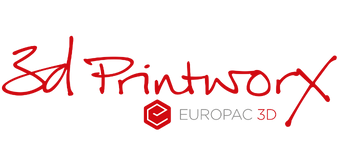How 3D has made an impact on the film industry
There is no denying that the quality of special effects makeup is outstanding within the film and television industry. But here’s a little secret… it’s not all makeup in those big-budget productions. In films like Rogue One: A Star Wars Story 3D technology had a key part to play in making those creatures look so… creature-like.
3D scanning makes this possible by taking an exact scan of an object or person and then manipulated with computer 3D design software to produce assets for film that can either be animated or rendered to produce stunning CGI effects.
A large proportion of feature films nowadays use 3D technology and CGI. Why? Because it can be very costly and time-consuming to 3D model complex objects by hand for a company and so, many will opt to scan objects with a 3D scanner.
There is a range of different options for 3D scanning an object depending on what the requirements are and the size and shape of the object. From props to actors, there is a unique solution for capturing the highest possible quality 3d digital data.
For props that require high-resolution 3D scans like guns and swords, Europac3D use Kreon arms and lasers. The latest Kreon Skyline system can scan at an incredible 600,000 points per second and has a bandwidth of 200mm. This means complex props such as highly detailed maquettes can be scanned quickly and at the highest resolution possible.
Remember those famous Quidditch scenes in Harry Potter when Harry is chasing the snitch around the school grounds? Our very own Kreon scanner captured those school buildings by taking a highly detailed scan of a scale model. The full 3D model was then rendered in a fully animated 3D scene as Harry and friends fly around the buildings.
In the Komodo dragon scene of Skyfall many of the surrounding props were 3d scanned to help produce a dramatic and dark atmosphere, as James Bond fights his way out of the pit.
For larger props like cars, sections of an aircraft and even scanning actors, we use Artec Eva in conjunction with high-resolution cross-polarised photography, especially where photogrammetry rigs (a process that requires 40-200 cameras set up in a 360 rig) are too difficult to transport or too costly to set up. Artec Eva simultaneously captures and processes up to 288,000 points per second and is twelve times faster than a laser scanner. We even took full body scans of a range of actors and actresses for Rogue One: A Star Wars Story including Oscar nominee, Felicity Jones.
More specifically, when actors are in a foreign film location and again it is not feasible to transport and install photogrammetry rigs we will use Mephisto, a rapid capture mobile scanner that uses a white light to scan actor’s heads and pick up extra detail in the face. This scanner can take an entire capture in less than a second and takes very little processing time. We even took full body scans of a range of actors for Rogue One: A Star Wars Story including Oscar nominee, Felicity Jones.
It’s not only 3D scanning that is used within the film industry but 3D printing too! Perhaps the most memorable of all being Tony Stark’s ‘Arc Reactor’ Chest piece and the entire Iron Man suit in the Iron Man trilogy.
The suit was created by beginning with a 3D reference drawing which was created by artists and a database of reference models. Once complete, the model was then 3D printed in a smaller scale and used as a prototype. This allowed amends to be made to the model efficiently before the final version was scaled and printed in full size.
Whether it’s scanning a human arm to create a 3D animation, or creating a digital arm to be printed in 3D, there’s no denying the possibilities that 3D technology brings to the film industry. And the exciting thing is, this only the beginning…


